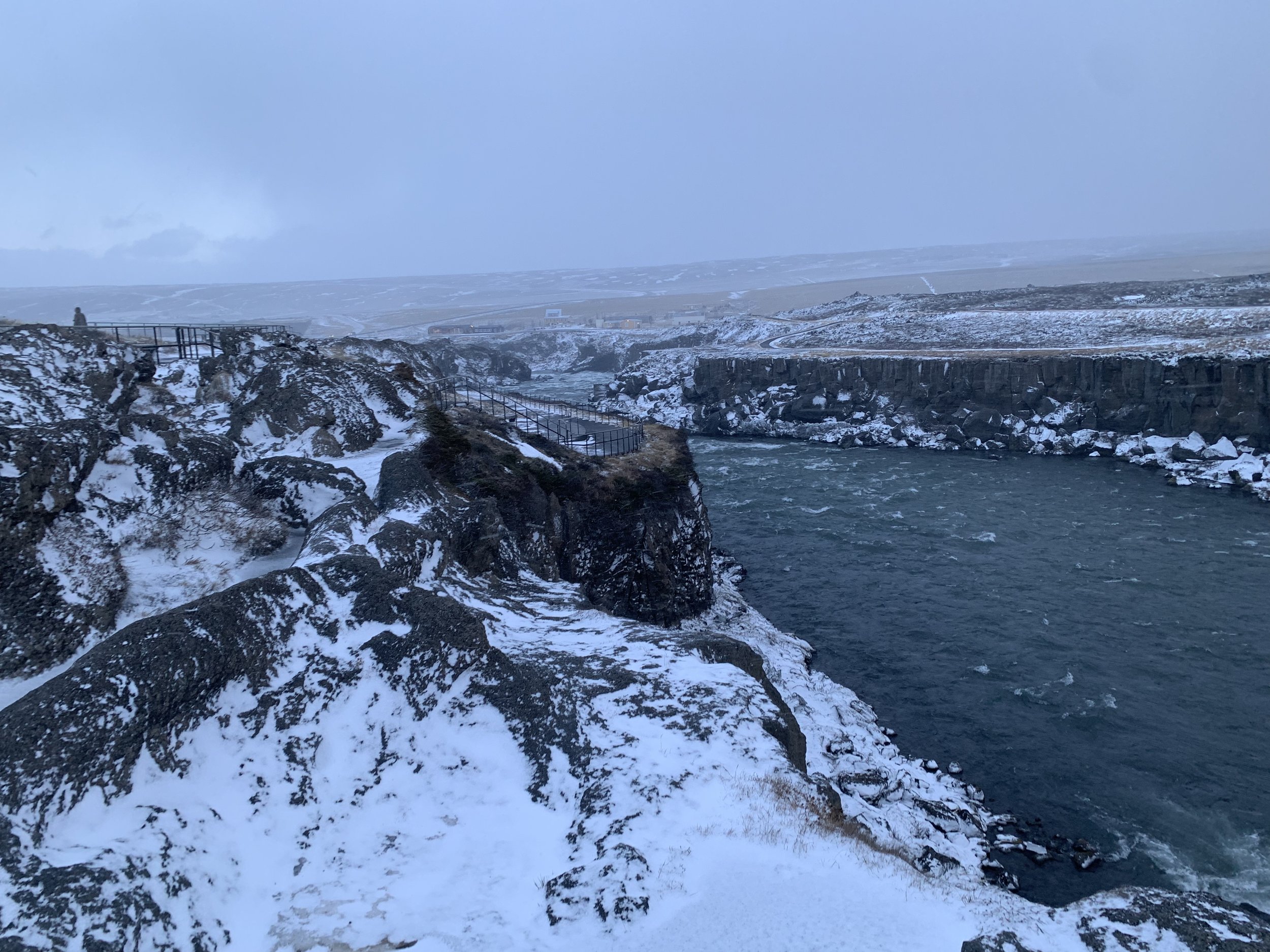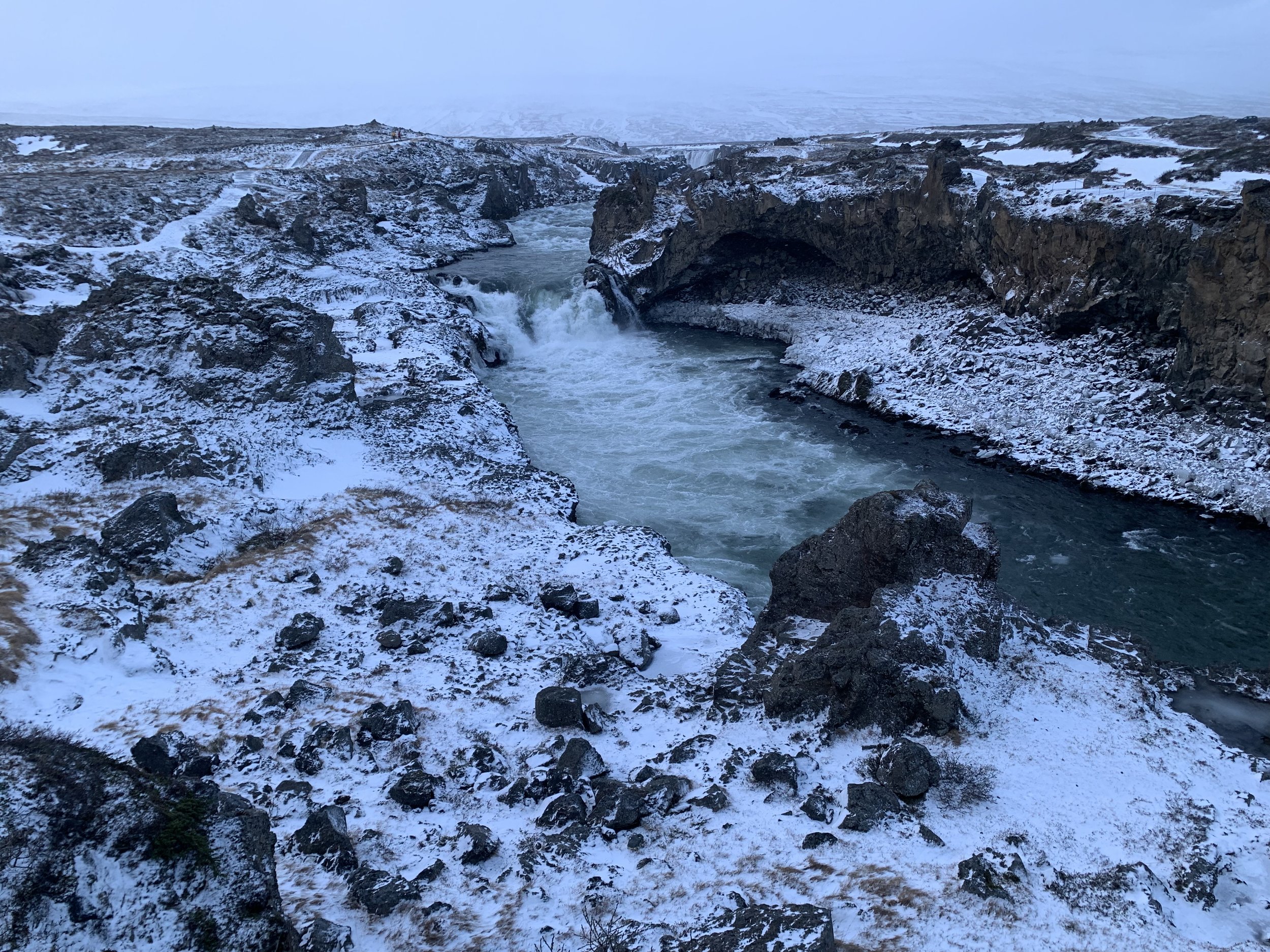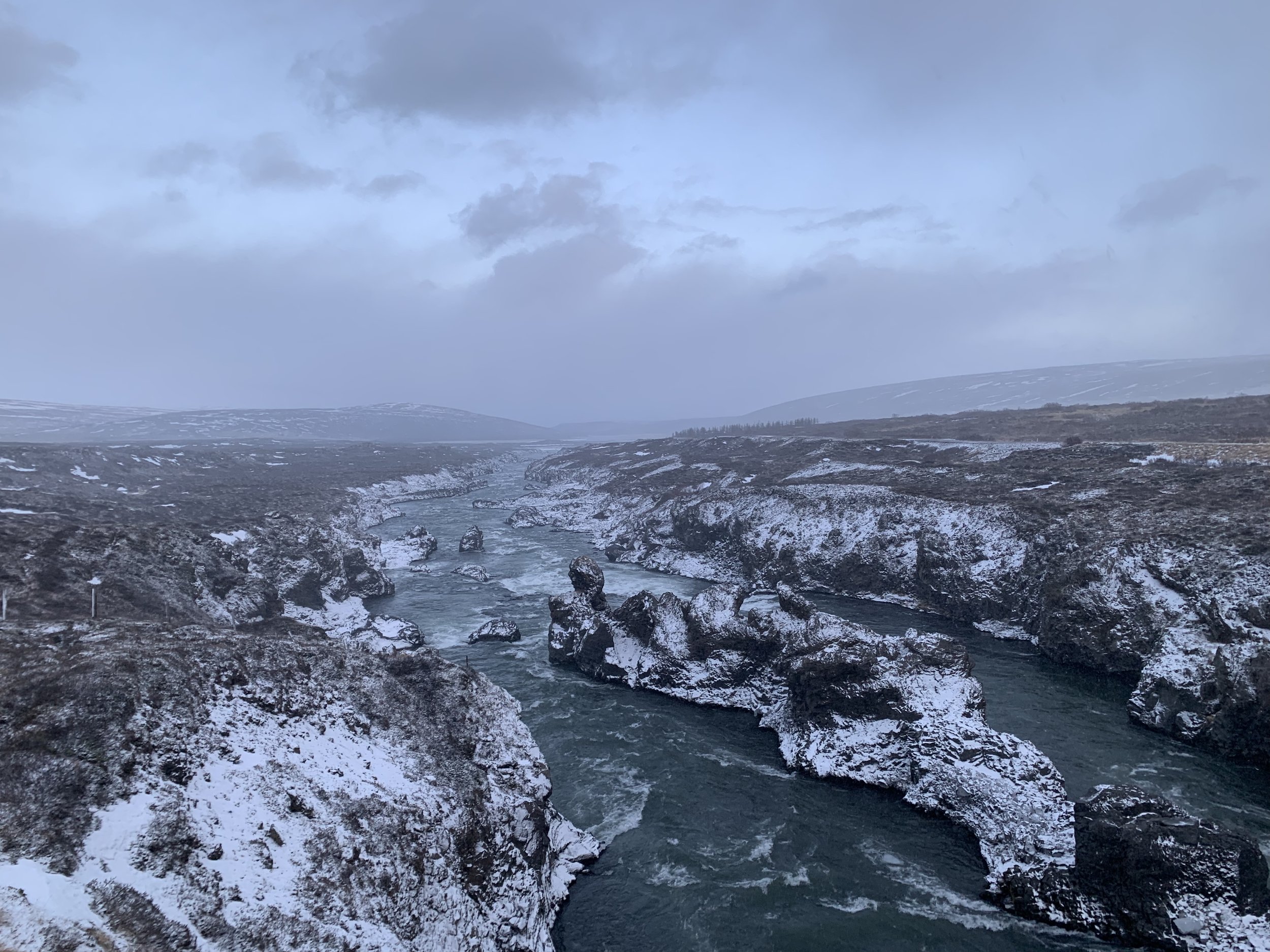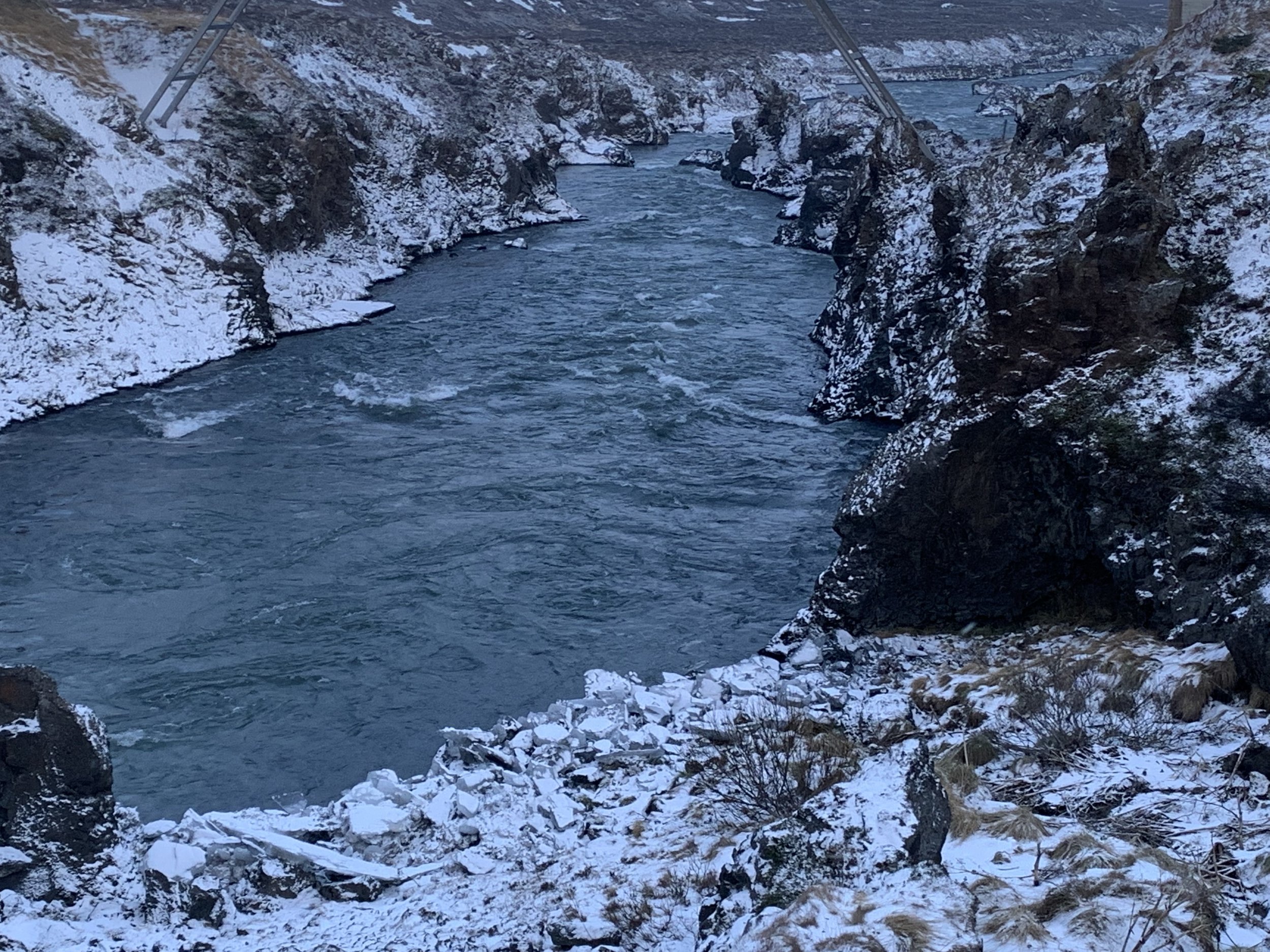Goðafoss
Situated on the Ring Road between Akureyri and Mývatn, Goðafoss is clearly visible from the road as you drive past. Though not as big or powerful as nearby Dettifoss, its history is deeper; it was at Goðafoss in 1000 AD that Iceland’s lawspeaker symbolized the country’s shift from believing in the Old Norse Gods to believing in Christianity by throwing idols into the waterfall.
The blue-green glacier water adds to the beauty of the waterfall itself
Picturesque Goðafoss or ‘Waterfall of the Gods’ is definitely one of the most beautiful and impressive in the country. Ice-blue glacial water flows over an elegant semi-circular arc. It creates blue-green swirling patterns in the water below among the surrounding lava.
Situated in the Skjalfandafljot river, which has its origin in the Icelandic central highlands, it is one of the most spectacular waterfalls in the country, falling from a height of 12 metres (39 feet) over a width of 30 metres (98 feet).
The reason it is called the Waterfall of the Gods comes from its fascinating history.
When Iceland was first settled in the 9th and 10th Centuries, the vast majority of settlers were Norwegians who followed the Old Norse religion, worshipping deities like Thor, Odin, Loki, and Freya. However, after the Commonwealth was established in 930 AD, pressure began to build from Europe to convert to Christianity.
By 1000 AD, it seemed that Norway would almost certainly invade if the country were to stand by its pagan beliefs. The issue was thus discussed at Þingvellir, where the parliament met once a year. The lawspeaker at the time, Thorgeir Thorkelsson, was given the responsibility to make the decision.
After pondering and praying about this for three days Thorkelsson announced that for the good of the people, Iceland should become Christian, but that believing in the old Norse gods was not forbidden, as long as you venerated them in in your own home. This wise decision settled the matter without antagonizing either group and avoided the civil war that had seemed inevitable.
According to the legend, Thorkelsson returned home to his farm at Ljosavatn, close to a beautiful waterfall, and removed his idols of the Norse gods from his temple. He took the idols and threw them into the waterfall. This supposedly angered the gods, so they split the waterfall in two. From that time the waterfall was known as Goðafoss.
A closer view of the large horseshoe-shaped rock that causes the waterfall to split into separate falls
We have visited Goðafoss a number of times, as I am incapable of driving past without stopping to look at this beautiful waterfall; it is definitely one of my favourites in Iceland. No matter the season or the weather, it is always beautiful. It is possible to park on either side of the river Skjalfandafljot, either in the official car park to the right of the river, from which there is a short walk to the viewing points, or on the left, where there is a gift shop and café. There is also a bridge across the river from this side which serves as another good spot to take photographs from.
The first time we went to Goðafoss was in the winter and we had to be really careful as the paths were incredibly slippery - luckily we had our pull-on spikes that go over the soles of your shoes as without them we would have been sliding all over the place. It was also incredibly cold and my touchscreen gloves were not behaving, so I had to pull my gloves off to take each photo - very painful!!
Goðafoss in winter
We returned in April with Imogen when she came to visit, as I wanted her to see it, and again in July. It is one of those places that is just beautiful whenever you go. I’ve not yet managed to be there with sunshine and blue skies - all the more reason to keep going back, as I’m sure the photos would be even better in good weather conditions. Luckily, with it being just a few metres off the main route 1 ringroad, and perfectly visible from it as you pass, it means that it’s really easy to stop and visit whenever we are up near Akureyri as we don’t even have to leave the main road or make a detour to incorporate it into our travel plans.
The nice thing about Goðafoss is that both the east and west sides of the waterfall are easily walkable. And while Goðafoss itself is without doubt the main attraction, there are lots of smaller falls and rivers and caves in the sides of the cliffs, so it makes for a very picturesque area.
Apparently, it’s even possible that you may see one of the local tour companies bringing people down the falls in kayaks!!!! I cannot even begin to imagine! Admittedly Goðafoss is much smaller (particularly height-wise) than something like the mighty Dettifoss but still…. there is no way I would ever be able to face doing that. I will be happy just to watch the waterfall itself!
Talking of Dettifoss, perhaps because they are so close together geographically, Goðafoss and Dettifoss are very often mentioned in the same breath and usually Goðafoss is referred to as ‘The Beauty’ and Dettifoss ‘The Beast’. It’s easy to see why as Dettifoss is a thundering monster of a waterfall whereas there is something almost ethereal about Goðafoss, despite its size. It really is very beautiful indeed.
Since last visiting, I have read that there is a path from the east side of the falls (where the shop and café are) right down to the water’s edge from where you can get a different view of the falls from below, but I haven’t done that yet, so that’s my plan for the next visit!










